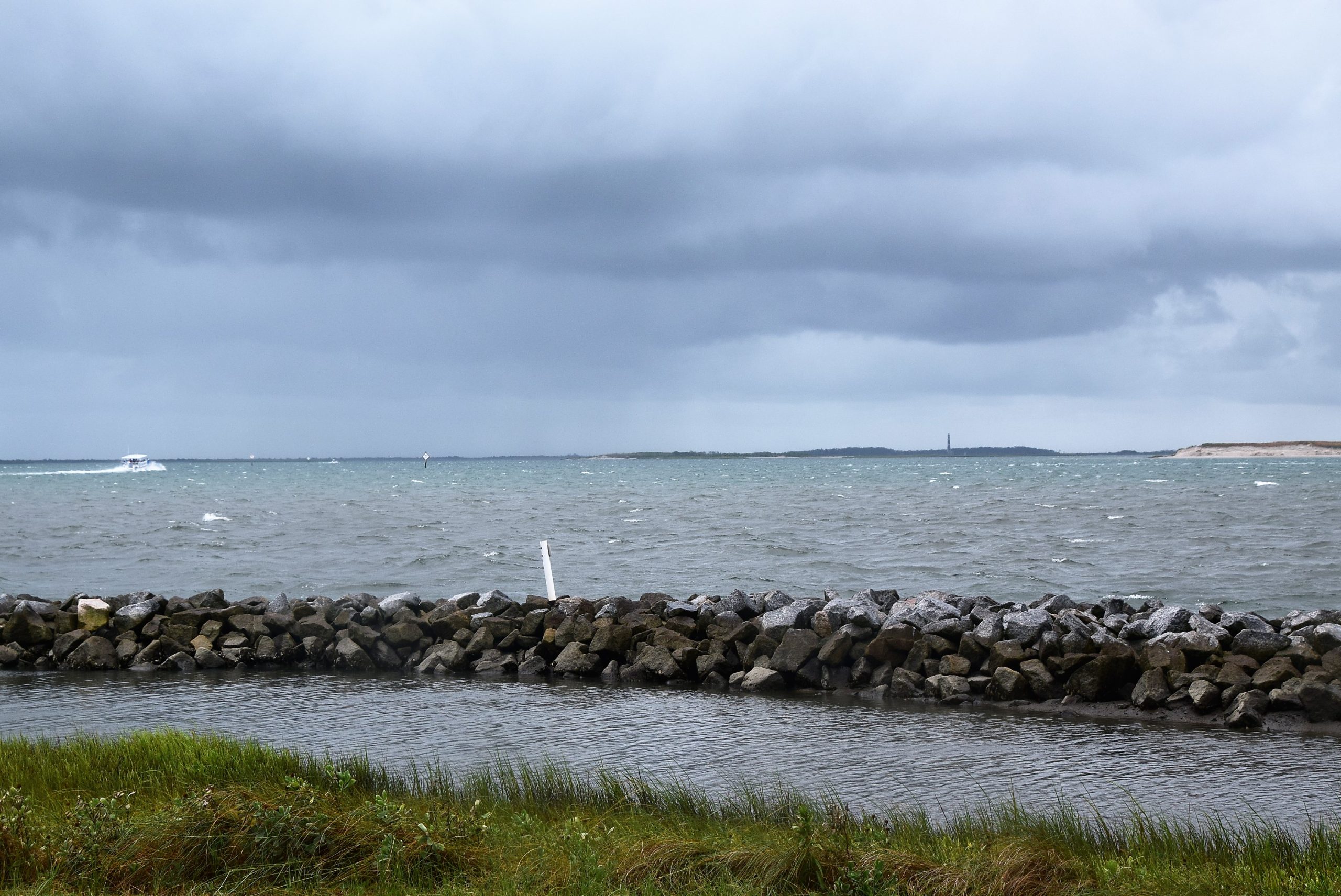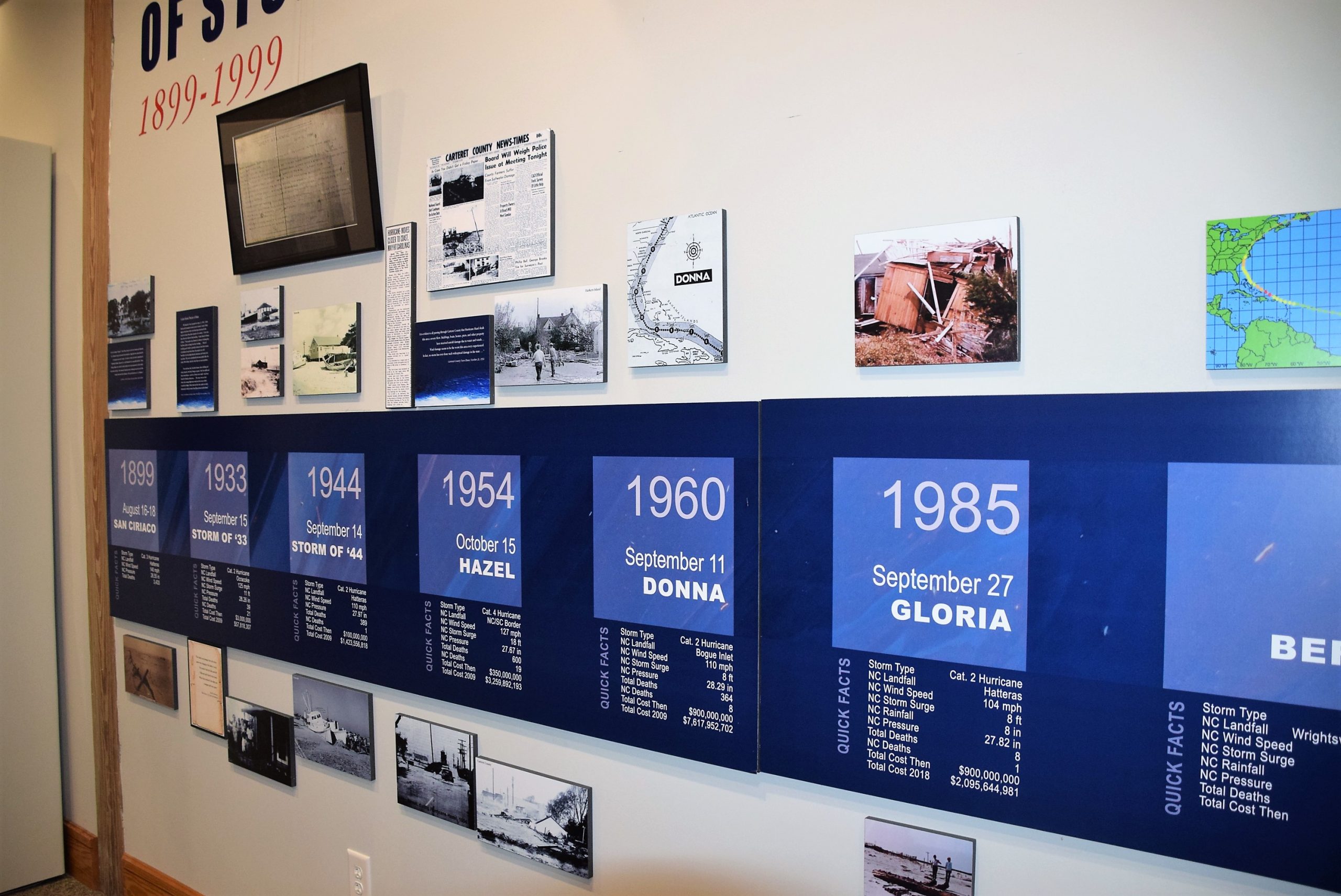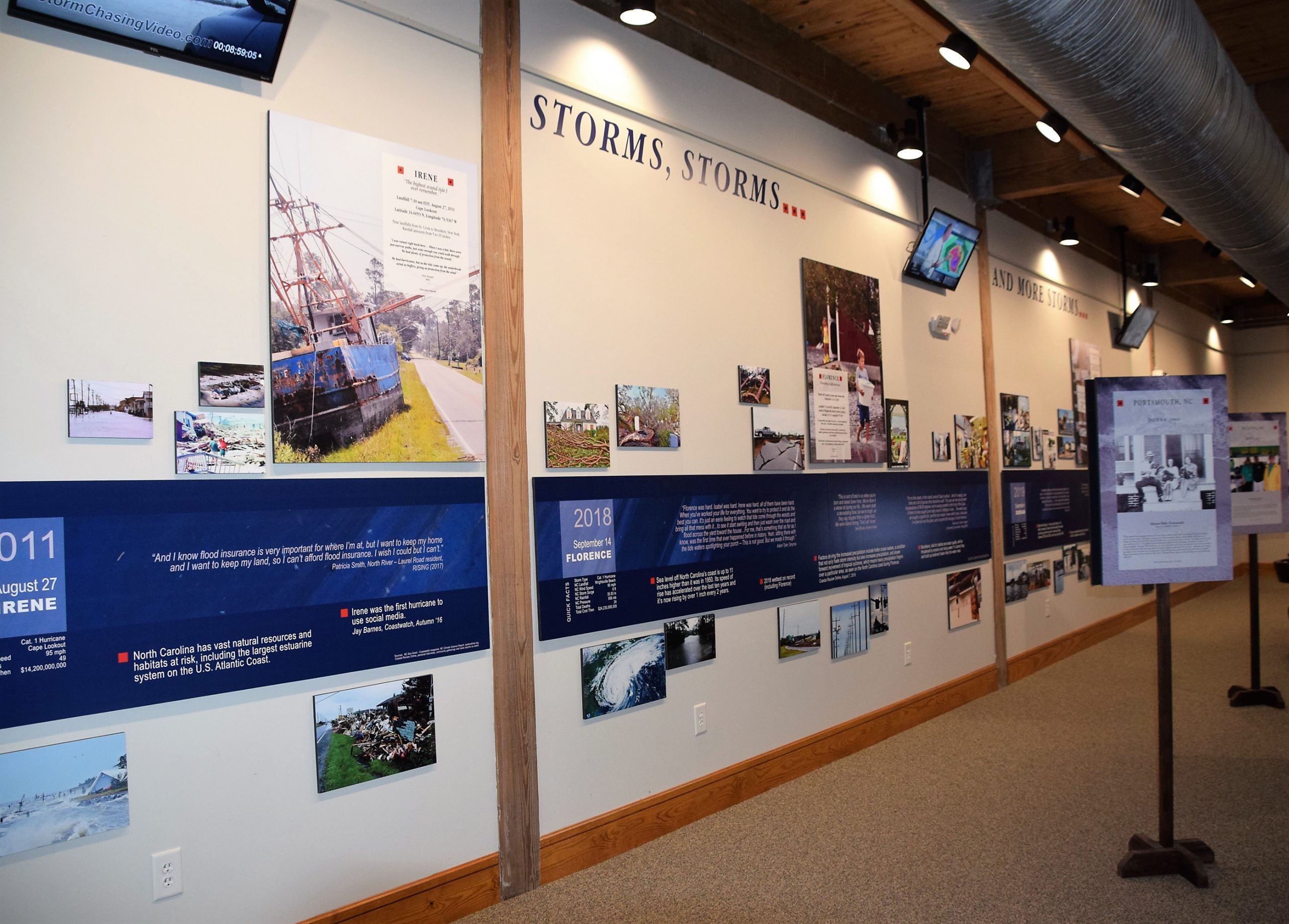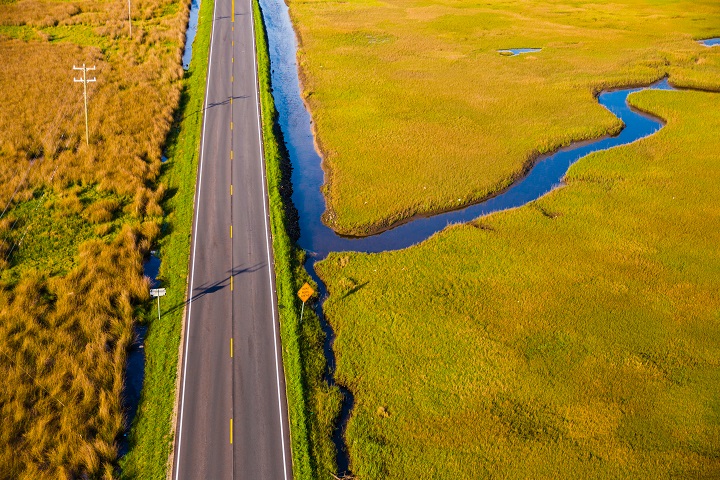
From Shell Point in front of the Core Sound Waterfowl Museum and Heritage Center on Harkers Island, Cape Lookout Lighthouse can be spotted in the distance across Back Sound, if the weather is right.
Like the view of the lighthouse from the mainland, life in Down East Carteret County — the dozen or so small communities east of Beaufort known for their maritime traditions — is contingent on the weather, especially storms.
Supporter Spotlight
In the last few years, there’s been a change. It’s more than just storms, said Karen Willis Amspacher, the museum’s executive director. Now the coast is seeing saltwater intrusion, more and greater flooding, rising seas and higher tides more frequently.
The museum, which focuses on the past and preserving heritage, is filled with hand-carved decoys and artifacts from days gone by and now houses a new exhibit, “Living on the Edge,” that looks at the impact of the last century of storms on the coast and a changing landscape.
Thursday morning, Amspacher was looking at the new exhibit, which includes selections from two previous exhibits, “Rising” and “Harm’s Way.”
“Harm’s Way” examines the last 100-plus years of storms that have impacted the coast. “Rising” is a collaborative project combining oral history and photography that illustrates how climate-related landscape changes shape communities and was made possible through a North Carolina Sea Grant program in partnership with the William R. Kenan Jr. Institute for Engineering, Technology and Science.
Amspacher said that with high tides all year round, sinking land in spots, the water table just below the surface and the dying trees, we see changes every day and we grow numb to it, “but hopefully this exhibition and the powerful photography that has been incorporated will cause folks to think about what they are seeing.”
Supporter Spotlight

“We’ve been having storms for 100 and some years, but now it’s different,” Amspacher said, adding that for so long, people accepted storms as part of life.
“They come, some hit, some pass us by, we pick up and we move on. Isabel in 2003 was hard on Down East, then Irene, then lots of scares, increasing high tides all year round, the changing landscape, inlets moving, the banks disappearing, the trees dying and then Florence,” she said. “Places flooded then that had never flooded before. It was the cumulative effect that raised the possibilities that all they had heard in the meantime regarding sea level rise may have some truth.”
The timeline, which runs the length of the exhibit and chronicles every major storm since 1899, includes, “quotes and facts between the storms because it’s not just storms. It’s flooding may occur. It’s that aggravated interaction between storms and high tides and saltwater intrusion,” Amspacher said.
Howard Bennink, a business owner, former teacher and National Park Service ranger on Ocracoke, is quoted on the timeline near the 2019 Dorian section.
“I remember reading one time about sea level rise that a lot of times, if it’s fair weather, it’s not real noticeable. But if you have a hurricane, nor’easter, or a whole lot of rain, that’s when you can really tell the water’s up … I think I agree with that statement. That you don’t notice (change) until you have a storm,” he said.
The exhibit also features a computer with access to the “Harm’s Way” digital archive that documents storms, as well as film and quotes show how both the media and social media play a role in storm reaction and response.
“We’re trying to recapture what’s actually happening,” Amspacher said.

After the timeline concludes with Dorian, the exhibit shifts from what has happened to what may happen with the illustration of projected sea level rise for coastal North Carolina.
Amspacher said that the transition from the timeline of storms to looking ahead illustrates “the place where people began to realize that yes — we can get hit again and again. There was a quiet, but very real, panic throughout Down East when Dorian was headed this way,” she said.
“The damage was still very real, the struggle was ongoing and the losses and struggles were way too raw,” she said, referring to how people were still feeling in the wake of Florence, causing the museum alone more than $1 million in damage, which staff and volunteers are still trying to put back together, almost two years later.
“Nobody slept those nights while Dorian tore up down south. When it got here and it had cleared here, we all breathed relief, but then when the word came immediately about what had happened to Ocracoke, everybody here went to work that minute. Boats were leaving the dock within hours headed to Ocracoke with tarps, chain saws, generators, all the tools of crawling out from under a storms.”
There are also quotes collected from locals show they are also noticing changes. One quote featured is from Zack Davis, commercial fisherman and high school teacher, during the August 2018 community conversation.
“Our coastline, yes it is changing … people that live here full time see it every day, they don’t see it, but when you look at the old pictures of Cape Lookout from the ’50s or Shackleford Banks in the ’40s, or some of the hurricane pictures where there’s nothing but flat sand, you just don’t realize how much it has changed, and how quick it has changed, until you look back,” Davis said.
The title “Living on the Edge” is best illustrated with an aerial photo by Baxter Miller of the North River Bridge that was featured in “Rising.”
The North River Bridge, which connects Beaufort and Down East, is on the edge, both figuratively and physically, Amspacher said. The photograph shows N.C. 70, a federal highway that carries thousands of cars a day, is within 2 feet of the canal. “We live on the edge … another storm, another high tide, another shift of an inlet. The point for Down East is that we are living on the edge. Now what are we going to do?”

Amspacher said they plan to add more to the exhibit and offer programming once permitted.
“I’m searching out some more very strategic points to make because people are talking about it differently and I’m just trying to give them enough facts. Not sermon but just, food for thought,” Amspacher said.
She said the reality of changing landscapes inspired the exhibit. “It’s like the storms don’t ever go away anymore. And it’s just here. It’s the number one issue for Down East Carteret County,” she said, adding that although the virus has somewhat deflected everybody’s attention, storms are a constant reality and you don’t get through with one before another comes.
“The point is, it’s not just the storms.” she said, explaining that she decided to push for the new exhibit and talking about the changes on the coast because It became more immediate and more obvious. Plus, “Florence, somewhat, knocked the politics out of it.”
Folks started talking about it and it’s on their minds, she continued. “And there was a lot of misinformation out there. A lot of confusion, but more and more reconciliation that it was connected. And a lot more questions about it,” she said. “So it’s a conversation this community needs to have.”
She said that the museum has always tried to listen to the community and encourage the conversation, whatever that conversation is, “whether it’s Down East tomorrow or storms or land issues or water quality. To me that’s a whole lot more urgent than just telling what used to be. Everything that this community depends on — home, family, community — to continue and sustain itself is wrapped up in these issues.”
Before COVID-19 restrictions were put in place, Amspacher said they had hoped to offer programs with state agencies about resiliency, oral histories and Down East communities, but haven’t been able.
“I hope people will just listen and look at the exhibit, then go home and think about what is happening in their communities, how many houses have been flooded, how many are being raised, the way the waters are changing, the Banks, the fishing patterns … and consider all of it together, and then see how important it is going to be that we plan and prepare now, to hold onto our homes, communities, the places we love,” she said.
The museum is on federal property, adjacent to Cape Lookout National Seashore’s Harkers Island visitor center, and has been granted permission to operate, though following strict restrictions. Core Sound also has an outreach center and gift shop in Downtown Morehead City at 806 Arendell St.
Amspacher will join Ernie Foster of Hatteras and Alton Balance of Ocracoke for “Story Circle: Islands on the Edge – North Carolina’s Maritime Culture in the Time of the Pandemic” at noon Thursday for an online conversation to talk about how the pandemic is another layer challenges for “islands on the edge.”
A part of the Smithsonian Earth Optimism initiative, highlighting success stories in conservation and sustainability, the three speakers will be continuing discussions started during the 2004 Smithsonian Folklife Festival’s Water Ways: Mid-Atlantic Maritime Communities program. RSVP online for this virtual program.







